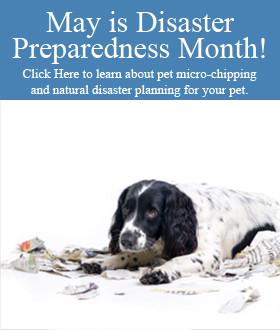The Trouble With Trap-Neuter-Re (Abandon!)
is simply stated by the executive summary of the 2012 Florida Department of Health Rabies Guide:
“The concept of managing free-roaming/feral domestic cats (Felis catus) is not tenable on public health grounds because of the persistent threat posed to communities from injury and disease. While the risk for disease transmission from cats to people is generally low when these animals are maintained indoors and routinely cared for, free-roaming cats pose a continuous concern to communities. Children are among the highest risk for disease transmission from these cats.”
Veterinarians are legally required to follow the Rabies Guide. As a result, we are gravely concerned about Trap-Neuter-Return (TNR), and the implications of any such county funded or endorsed program. Most importantly, veterinarians are aware of the following numbers (to mention just a few):
* 30,000 +/- Kids are Hospitalized Each Year from Cat Scratch Disease!
* 455 People in Florida given Rabies Shots from Cat Attacks in 2010!
* 250,000 -1.25 MILLION people impacted yearly with Ocular Toxoplasmosis!
* 1 of every 4 Americans infected with Toxoplasmosis!
* 4,000 – 6,000 Kids develop Congenital Toxoplasmosis each year!
* 2.4 BILLION (avg) Birds Killed by Feral Cats Each Year!
* 12.3 BILLION (avg) Small Mammals Killed by Feral Cats Each Year!
There are six important considerations to this question, each summarized below. Following each is a link to peer-reviewed scientific journal articles and other relevant literature. This will allow you to “drill down” into the subject, and read the literature that plainly supports the Department of Health’s position on feral cats. We will continue to update this library as information becomes available. And we are also here to answer your questions, so don’t hesitate to email with any inquiries! Most important. we have a solution that addresses the concerns of all our friends; two legged, four legged, and feathered. We simply cannot continue dropping stray cats behind dumpsters at the mall and call it animal welfare – we can do better, and we will!

The public health trouble with TNR is that even vaccinated stray cats are still carriers of many significant infectious diseases and are able to transmit those diseases to other animals and humans. The following diseases have been documented in cats in Florida: Rabies*, Feline Leukemia Virus, Feline Distemper, Feline Infectious Peritonitis, Feline Immunodeficiency Virus, Feline Viral Upper Respiratory Disease, Catscratch Disease*, Toxoplasmosis*, Lyme Disease*, Roundworms*, Hookworms*, Plague* (*transmissible to humans). Also, the one vaccine provided these cats, the rabies shot, has a very limited duration of effect. Although the scientific literature is clear that indoor, owned cats properly cared for are little risk, the literature is equally clear that unowned feral and stray cats are a signficant risk! Worse, a large burden of the risk lies against our precious children! Anything that increases the risk to our kids is unacceptable. Because so many of these disease risks are transmissible to humans, it is the veterinarians legal requirement to exercise extreme caution. We are very reluctant to overturn long standing public health principles that are established based on demonstrated science and facts. You can learn details of those facts by reading the scientific papers that are found in the link below. Be assured the veterinarians have read the papers and we fully understand the implications. Consequently, we stand with the Florida Department of Health and are compelled to refrain from supporting TVNR.

Cats are recognized as a widespread and serious threat to the integrity of native wildlife populations and natural ecosystems. Wildlife biologists have clearly documented the impact of feral cats on the environment, and feral cat run-ins with wildlife include competition, predation, and disease transmission. Scientists conservatively estimate that every year in the United States free-roaming cats kill BILLIONS of native birds and TENS OF BILLIONS small mammals, amphibians, and reptiles. The predation by feral cats includes federally protected species of conservation concern, as well as more common species. With people feeding these non-native predators, they have an unnatural advantage in nature, and are thus appearing at frequency rates 10-100 times greater than nature would allow (prey animals in a balanced ecosystem greatly outnumber the native predators). Consequently, feral cats have caused substantial harm to species as diverse as sea otters and marsh rabbits. Making matters worse, feeding stations attract all manner of wildlife and allows for cross species transmission of disease, particularly Rabies. And feeding cats doesn’t stop the wildlife predation. Studies show a cat’s instinct to hunt is de-coupled from the hunger instinct (meaning they hunt and kill even if well fed), so nothing short of removal from the ecosystem will stop the harm to native wildlife. Cats belong indoors, or contained outdoors; not loose and preying on endangered species outdoors. Read the studies and see why wildlife biologists are uniformly against TVNR.

The life of a stray, or feral, cat is tough. Negatively impacting the environment thru the spread of disease and wildlife predation, the cats themselves suffer on the street. While the average lifespan of an owned, indoor cat exceeds 12 years, the average lifespan of a feral cat is 2-3 years. Worse, the manner of death for these cats is gruesome in most cases, as any veterinary hospital can attest. Veterinarians routinely handle medical cases of feral cats in which the cat has been hit by a car, or poisoned, or mauled by a dog. Interestingly, some cat advocates will point to studies that show good “body condition” of feral cats, neglecting to recognize that the natural animal instinct is to hide when hurt. As a result, studies are only accounting for the cats which are active. Studies of managed colonies show frequent turn-over of cats in the colony, as injured and diseased cats hide until death. The reality is most feral cats never receive help or treatment, but rather die miserably and in pain. This hardly constitutes animal welfare, and as veterinarians we are determined to end this needless suffering. Our domesticated buddies do not deserve to die behind the dumpster, they deserve to find homes and be brought in off the mean streets. Click the button below to get more details on the reality of life as a feral or stray cat. Be aware some of the photos are gruesome, but the simple reality is that while cats are an incredibly efficient predator, their life is hardly filled with idyllic scenes of mice chasing and afternoon naps. The truth is quite different!
Learn More
Simply put, TNR is not legal! Deliberate release or abandonment of feral or domestic cats is not sanctioned under Florida’s conservation and cruelty laws. Domestic cats are not “indigenous” or native to Florida, and relocating and releasing non-native species into the wild is a violation of Florida Statute 379.231 and Florida Administrative Code 68A-4.005. Due to their adverse impact on wildlife, the Florida Fish and Wildlife Conservation commission does not issue permits to make lawful either the release of cats to the wild or the establishment of feral/free-roaming cat colonies. Additionally, the Federal Migratory Bird Treaty and the Endangered Species Act negatively implicate TVNR and creates the possibilitity of legal action against veterinarians engaging in TVNR. Finally, the primary veterinarian medical malpractice carrier will not provide insurance coverage for illegal activies. As a result, the legal risk is substantial for veterinarians participating in TVNR. When coupled with every other piece of scientific fact, the veterinary community of Hillsborough County must reject the notion of county sanctioned TVNR. Read the details about legal issues by clicking on the link below.

When TNR first began, the goal was to reduce the feral cat population humanely. While this goal was admirable, time and scientific studies show that TNR doesn’t work for population control. Perhaps more importantly now, feral cat advocates define ‘success’ without including decreases in numbers, focusing instead on the health of the cats themselves. This is not the idea behind TNR, which is supposed to reduce numbers. However, even in small contained areas, success as defined by reduction in population has been hard to achieve. In a large area like Hillsborough County, TNR will not work, even if there were no other health concerns. Study after study documents that TNR, due to the ability of feral cats to avoid trapping and due to their remarkable ability to breed, is not effective in terms of population control. More importantly, regardless of the ability or inability to reduce population, we simply cannot ignore public health concerns, wildlife predation, and the welfare of the cats. The risks to our public health demand we find another solution that quickly reduces the number on the street. Read more below about why TNR is an ineffective method of reducing the population.

By clicking on the link below, you will have the opportunity to examine the leading cat TNR advocacy group’s “fact sheet”, that of Alley Cat Allies. You will discover the alleged facts are either extreme distortions of medical papers (at best) or outright fraudulent (at worse). We call on the Scientific Committee of the Alley Cat Alley organization to review their ‘fact’ sheet and make appropriate changes. Advocating to overturn long standing principles of public health, purely in the interest of maintaining outdoor colonies of feral and stray cats, is untenable and unacceptable. The fact sheet begins by stating that “there is simply no evidence to back up the position that cats spread disease” and it gets more troubling from there. Some of the more onerous statements are that “Science Shows Feral Cat Colonies Pose No Disease Risk to Humans” as well as that “No Danger From Rabies” exists from feral cats. Simply put, both of these so called facts are FALSE. Read more below, and see why the veterinary community calls on Alley Cat Allies to update their scientific literature immediately. While we are entitled to our own opinions, we are NOT entitled to make up our own facts.






































